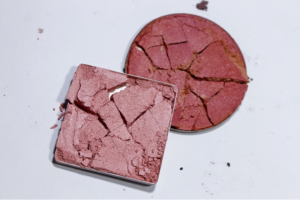Suing In New Jersey: How to Prove Faults for Defective Product Claims

Each year, thousands of individuals suffer injuries as a result of items that either lacked adequate warnings about inherent risks or were manufactured with design flaws.
Although product disputes can be challenging to fight and frequently call for the employment of expert witnesses, you can always sue the responsible party and make your claims against your loss.
This article will help you understand how to prove the faults for defective product claims and sue the right party for the damages.
What Is A Product Liability Lawsuit?
Product responsibility is the legal term for when a manufacturer or seller is held responsible for putting a defective product in the hands of a customer.
Generally speaking, the law requires that a product meet standard consumer expectations. If a product contains an unexpected fault or danger, it cannot be said to have met these expectations.
Lawsuits based on product responsibility are sometimes filed under the legal theories of strict liability, carelessness, or warranty violation.
Parties At Fault
If you are wondering how to sue the responsible party with a product liability lawsuit, it is first important who your probable opponent could be.
Given below are some of the liable parties who you may consider when suing—
- Product manufacturer.
- Manufacturer of defective product parts.
- Wholesaler or supplier.
- Retailer.
- Installation workers.
Types Of Defective Product Liability Claims

There are three main types of faulty product liability claims that you could have. Products may have flaws in their production, design, or lack of suitable instructions or cautions about how to utilize them.
The core product defects that can be claimed, which are listed below, are practically the same in every state. You must demonstrate not only that the product was flawed but also that the flaw was the direct cause of your harm for each of these claims.
Manufacturing Defects
A product liability claim is made when the injury-causing product was improperly created, such as when a cough syrup batch was contaminated or when a moped’s brake pads were missing.
Each time, the damage must have been from the manufacturing flaw rather than from poor steering or bad curve judgment.
If you could prove that the accident was caused by the moped’s lack of brakes rather than your bad steering, you could have a claim for a manufacturing defect.
Defects In Product Design
A product’s design falls under the first category of product liability when it is inherently hazardous or flawed.
A line of electric blankets that can electrocute the user is one example, as is a certain automobile type that frequently flips over when rounding a bend.
If you were operating one of the aforementioned flip-prone automobiles and unintentionally collided with another car, your sole legal recourse would be a design flaw.
Lack Of Crucial Warnings
The third kind of product liability lawsuit is the absence of sufficient cautionary statements or usage guidelines for the product.
Failure-to-warn allegations usually include a product that is hazardous in some way that is not readily apparent to the user or necessitates the user to take more care or exercise extra caution when using it.
Negligence Of The Retailer
The aggrieved party must demonstrate the retailer’s carelessness. It is necessary to obtain concrete proof that the shop knowingly and voluntarily supplied faulty goods.
Prior to the retailer selling the goods to the injured plaintiff, a capable product liability attorney will make sure that crucial information concerning the production and distribution of the defective product is made accessible to the store.
Warranty Breaches
Worries set a consumer’s expectations for a product’s quality, security, and dependability. Certain items come with written warranties that are sold or offered, while other things only come with verbal guarantees from salespeople.
A shop may be held liable for a breach of warranty if they break a written, verbal, or implied guarantee they made to a customer.
Wrapping Up!
Pharmaceutical medication product liability lawsuits fall into one of three categories, and it’s critical to know the distinctions between them.
Your claim would be based on a manufacturing flaw if you were hurt by accidental droplets of arsenic in a bottle of cough syrup.
Your damage is the result of a design flaw if ingesting the same type of unaltered cough syrup led to a heart attack owing to its regular contents.




